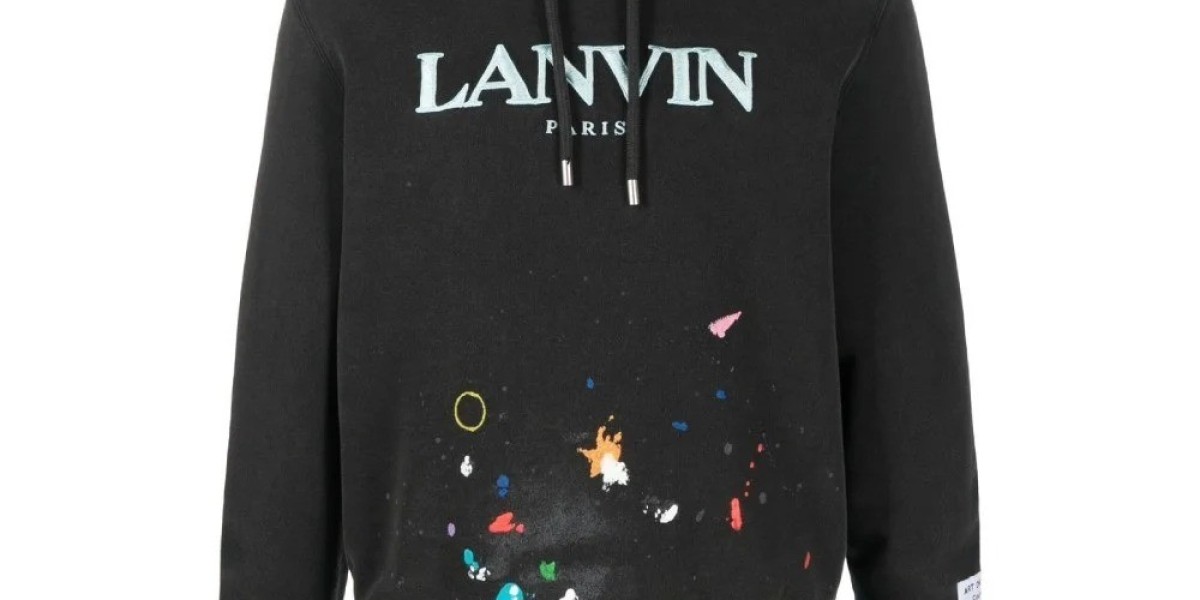A Legacy Rooted in Elegance
Founded in 1889 by Jeanne Lanvin, the Lanvin fashion house is one of the oldest and most storied names in French couture. From the beginning, it stood out not just for its craftsmanship but for its commitment to innovation. Jeanne Lanvin’s early work redefined women’s fashion with flowing silhouettes and delicate embroidery, setting the tone for modern elegance. Over the decades, the brand has remained rooted in that original vision of luxury with a progressive twist. Its legacy continues to influence new generations of designers and fashion lovers alike.
Blending Classic and Contemporary
What sets Lanvin apart is its ability to merge timeless refinement with bold, modern ideas. Whether through sharply tailored coats or fluid, avant-garde dresses, Lanvin always walks the line between tradition and experimentation. The house doesn’t cling to nostalgia—it transforms it. From Art Deco inspirations to streetwear-adjacent collaborations, Lanvin’s collections continually reinvent what it means to be “classic.” This seamless blend keeps the label not just relevant, but influential in setting the visual tone for seasons to come.
Runway Shows That Resonate
Lanvin’s runway shows remain a focal point of Paris Fashion Week, drawing critical acclaim and social media buzz year after year. Each show is more than just a display of clothes—it’s a narrative, a mood, a statement. From rich color palettes to unconventional styling choices, Lanvin makes sure each detail speaks loudly. Fashion editors, stylists, and fellow designers often cite Lanvin’s collections as key directional moments. What debuts on the Lanvin catwalk often trickles into the wider fashion landscape in subtle, yet powerful ways.
Cultivating Cultural Relevance
While many heritage brands struggle to remain in tune with contemporary culture, Lanvin has done so with remarkable ease. Through collaborations, innovative ad campaigns, and creative direction that connects with younger audiences, Lanvin speaks the language of now. This ability to be culturally fluid while retaining its DNA is what keeps the house ahead. Whether it’s referencing music subcultures, digital aesthetics, or socio-political themes, Lanvin’s messaging feels intentional—not opportunistic. It creates resonance, not just relevance.
Strong Creative Leadership
A crucial reason for Lanvin’s trend-setting status is the strength of its creative directors, past and present. Alber Elbaz, who helmed the house from 2001 to 2015, injected it with emotion, drama, and wearability, influencing an entire era of fashion. Today, under newer creative direction, the brand continues to push boundaries while staying loyal to its codes of sophistication. This leadership understands the fashion cycle without being consumed by it. Instead of chasing trends, Lanvin creates moments that feel inevitable in hindsight.
Lanvin’s Influence on Silhouettes
Over the years, Lanvin has helped define the silhouettes that dominate wardrobes. The brand popularized softly draped evening gowns, sharply cut shoulders, and asymmetrical detailing long before they became high-street staples. Even in menswear, Lanvin has played with proportion, structure, and texture in ways that later echoed across other designer collections. By introducing fresh silhouettes early and fearlessly, Lanvin leads the evolution of form and fit season after season.
Fabrication and Detail as Storytelling
Lanvin doesn’t just design garments—it tells stories through textures, prints, and fabrics. The brand is known for its masterful use of materials: silk, tulle, metallic jacquard, and intricate embellishments that elevate each look. Even the smallest detail—a sleeve ruffle, a hidden seam, a vintage button—speaks to intentionality. This level of craftsmanship sets a standard that others strive to follow. It reaffirms that innovation in fashion isn’t just conceptual—it’s deeply material.
Celebrity Endorsements with Purpose
Lanvin’s red carpet moments are never generic; they’re strategic. Celebrities who wear Lanvin aren’t just showing off—they’re participating in a legacy. From timeless silhouettes on Oscar night to cutting-edge ensembles at music awards, Lanvin uses star power to amplify its message. These moments go viral not because of shock value, but because of how elegantly different they are. Lanvin dresses stars the way it dresses everyday clients—with confidence and clarity of vision.
A Global Brand with French Soul
While deeply rooted in French fashion tradition, Lanvin has become a global style reference. Its ability to translate French elegance into something universally desirable speaks to its refined branding. The label offers something rare: clothes that feel deeply Parisian, yet accessible to fashion-conscious people around the world. In Asia, North America, and the Middle East, Lanvin’s presence continues to grow without losing its identity. It proves that authenticity and international appeal aren’t mutually exclusive.
Shaping the Future, Not Following It
Where other fashion houses follow the pulse of the industry, Lanvin seems to compose its own rhythm. Its collections often introduce trends that later become mainstream—from fabric choices to color schemes to cut. This foresight is what makes Lanvin a quiet leader. The brand doesn’t scream for attention—it earns it by doing what it’s always done: creating beautiful, wearable art that captures where the world is going. It’s less about reaction and more about vision.
Enduring Style in a Fast-Paced World
In today’s fashion landscape, where trends shift in a heartbeat, Lanvin remains a stabilizing force. It offers an antidote to the disposable and the derivative. Whether through seasonless essentials or thoughtful statement pieces, Lanvin promotes intentional dressing. It reminds fashion lovers that style doesn’t have to be loud to be heard, and elegance doesn’t have to be outdated. As others burn through cycles, Lanvin stays grounded—and that’s what makes it future-proof.








